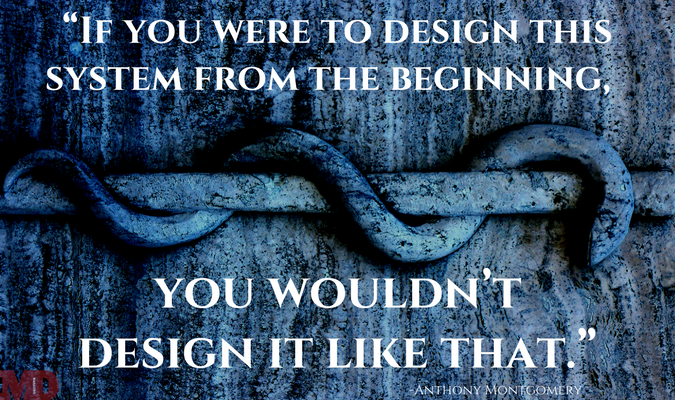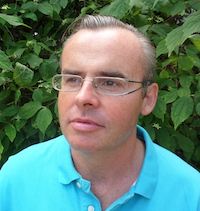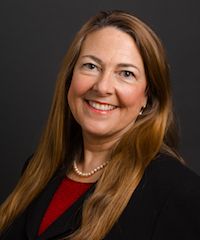But Who Treats The Doctors?
Physician self-medication is the dangerous product of unrealistic expectations and fear of retribution. What’s being done to lift the stigma of doctors becoming patients?

the International Meeting on Well-Being and Performance in Clinical Practice will open its third session in Mieza, Macedonia. It’ll be hosted at the site of the ancient laboratory of one of history’s most famous teacher-student duos: Aristotle and Alexander the Great.
It’s not by chance the Well-Med organization—a young, select group of about 150 global leaders in physician wellbeing—would convene here. It’s where Aristotle taught Alexander that virtue and character are paths leading to true happiness. That’s an increasingly important musing for a physician workforce that’s often pushed to its wits’ end.
According one of humankind’s most renowned thinkers, a physician should by definition feel fulfilled, because their purpose—to provide care for others, above all else—is worthy and selfless. That purpose hasn’t changed since Aristotle contemplated it 2400 years ago, but the world where physicians work certainly has.
That’s why when Well-Med meets in Greece this May, they won’t be celebrating how their colleagues have achieved happiness through their practice—they’ll be trying to figure out where, when, why, and how Aristotle’s philosophy became broken.

Anthony Montgomery, PhD
For Anthony Montgomery, PhD, Well-Med co-founder and Associate Professor of Work and Organizational Psychology at the University of Macedonia, physician burnout is a given. It starts in medical school, where gifted students are expected to have immediate and impactful skills outside the classroom, he told MD Magazine.
“They come into a Darwinian environment where they have to learn on the job,” Mongtomery said. “It’s a culture of treading in the deep end. They’re in a culture that doesn’t like mistakes, doesn’t like to admit there are mistakes, and doesn’t like errors.”
Med students move on to residency, where long hours are the norm and breaks are taboo. As they transition into direct patient care, shortcomings can manifest in poor patient outcomes. Mistakes made as a student, just months ago, were reflected in their grades, but mistakes made in practice can hurt their patients, reflect poorly on their colleagues and hospitals, and diminish their sense of self-worth.
Providers are offered an unofficial, unspoken, unproductive solution that goes something like this: If you can’t handle the stress of helping others, find a way to help yourself.
The outcomes of that approach are becoming increasingly clear. It afflicts physicians with anxiety, fear, depression, and addiction. Many feel they can’t turn to a colleague to receive care when they need it, so they follow their training and simply give it to themselves. Repercussions are wide-ranging, and affect their network of patients, co-workers, and loved ones.
Self-Medication in the Shadows
“If you were to design this system from the beginning, you wouldn’t design it like that,” Montgomery said.Montgomery finds proof in the numbers. Decades of global research suggest that provider self-medication is commonplace and detrimental. An April 1991 survey of 3000 US resident physicians found a greater rate of doctors consumed alcohol and benzodiazepines than the general population—a trend which generally began in their first years of prescription privilege.
A February 1998 questionnaire of 1024 Norwegian physicians found that 72.6% of those who admitted to minor tranquilizer use had self-prescribed the drugs. A 2007 randomized cross-sectional survey of 1784 Swiss primary care physicians reported that 65% of respondents had used pharmaceutical drugs in that past week. In that population, 90% of the treatments were self-prescribed. Overall, just 21% of the physicians reported having a regular doctor.
The common estimate for drug or alcohol addiction in physicians is between 10-15% of the population—a distinct increase from the 8-10% rate in the general population. The simplest explanation is that physicians have easy access, as noted by Peter Grinspoon, MD, in a column written for the Los Angeles Times in June 2016.
Grinspoon once battled a prescription opioid drug addiction while working as a primary care physician. He wrote that his “virtually unlimited” access to drugs—free samples of new therapies, patients’ disposed unused painkillers, scrips written by colleagues—perpetuated his habits.
When he finally received care through the Massachusetts Physician Health Service, he was under supervised court probation, without his medical license, and still reeling in the throes of laborious questioning directed from his state medical board. And yet, he got better in rehabilitation. In fact, he wrote, physicians often succeed at great rates of 70-80% in addiction rehabilitation. Grinspoon began to think that the addiction problem wasn’t stemming from unlimited drug access or limited care services. It was a byproduct of the penal process, which scared him away from seeking treatment until it was too late.
“When doctors abuse drugs and alcohol, they must be met with compassion and care,” Grinspoon wrote. “Instead of reflexively revoking or suspending licenses, state medical boards can usually ensure patient safety by keeping doctors at work under careful monitoring.”
A doctors’ reflex to hide their problems—a trait Montgomery again blamed on the cover-up culture of medical school—is only exacerbated by stigma and legal consequences surrounding physician self-medication and addiction.
Patient Safety and Reporting
“Knowing this, troubled doctors tend to stay in the shadows until disaster strikes: a DUI, showing up high in the operating room, or in my case, getting charged with a serious crime,” Grinspoon wrote.Patient safety is usually the first point raised when people think of physician self-medication, and rightfully so, Montgomery said. Recent research has led him to believe that medical errors are already underreported at a significant rate—without consideration to providers working under the influence of a substance or alcohol.
“If we measured deaths from medical error properly, it’d be about the third biggest killer in the world,” Montgomery said. “And it’s not getting better. The solutions are difficult to find.”
It’s easy for the public to condemn physician self-medication when the story starts with a doctor taking amphetamines and ends with a mistreated patient. But, Montgomery noted, it’s much more complicated than that. Really, it’s a story that begins with physicians’ repeated exposure to trauma, progresses to the absence of a system in place to help them cope, and ends with self-diagnosis and self-medication.
The issue is compounded when a doctor has to decide whether to call out a colleague for self-medicating. Usually, they don’t know the full scope of their colleague’s issues, but are aware of the repercussions of making them known. Montgomery pointed to research that’s shown that physicians are more likely to escalate the matter if a colleague is physically expressing problems through symptoms and obvious tells. However, they’re not as likely to receive the attention they need if their colleagues see issues manifest insidiously through self-deprecation or dark humor.
“In a sense, they’re the ones you definitely need reported,” Montgomery said. “Nobody wants to report a colleague, but the trends are more worrying in that regard.”
The result is a culture of enabling. Because physicians are more likely receive “curbside consultation” from a colleague than they are an actual diagnosis from a doctor’s visit, they’re allowing themselves to work through sickness and cause risk to their patients. Montgomery sees tragic irony in a doctor working under improper treatment for the sake of their team.
Self-Care and Changing Times

Dorothy Stubbe, MD
“The underlying message is basically that patients are not that important, because they’re valuing the workload of their colleagues more,” Montgomery said.Dorothy Stubbe, MD, doesn’t remember thinking about herself once during her residency. She underwent training decades ago, when her self-worth was measured by how much she worked and the word “burnout” hadn’t yet entered the physician lexicon.
Even now, as the Program Director of the Yale Child Study Center at Yale School of Medicine, finding a doctor who practices what they preach is no easy task. She notices psychiatrists failing to treat their own depression in the same way a primary care physician would mistreat their own sickness.
“We still have the physician stigma about mental health issues, even in psychiatry,” Stubbe said. “Psychiatrists…don’t want to be in the patient role.”
That patient role—being vulnerable and needing help—frightens doctors. Stubbe told MD Magazine the notion that providers always give help and never receive it is most strongly perpetuated by those within the physician community.
“There is a culture of, if you’re a really good doctor, you don’t take a day unless you practically can’t move,” Stubbe said. “It’s a culture where it focuses on how good your work is, and also, that’s your identity.”
But whereas Montgomery and Grinspoon see the issues stemming from the systems that drive young doctors to self-care and frighten them from seeking rehabilitation, Stubbe sees it as a matter of time—or a lack thereof.
“When we think about wellness, we think about exercise, treatment, yoga, meditation,” Stubbe said. “I do believe those are all good for us, but on the other hand, one issue physicians have is not enough time. If adding one of these things becomes a burden on what you have to do that day, it really defeats the purpose.”
More facilities and institutions are giving students and residents more time—to run errands, to catch up on notes, to see a doctor, Stubbe said. The next generation of physicians have also been more vocal about their need for time. While it was considered selfish for Stubbe to take a personal day during her residency years ago, her residents are now more willing to address work hour issues or their need for a break. They’re coming into a field where burnout and wellness are front of mind.
Back to School
“I do think younger physicians are considering much more fully the issue around balance in their life, in trying to have a career that allows that balance,” Stubbe said.If physicians seeking care is a generational change, then it requires recognition and direction from novel projects like Well-Med. The organization doesn’t meet to collect abstracts or host drug providers, Montgomery said. It serves to solve physician problems directly—its primary goal is to ensure the 150 attendees are all able to meet and learn from each other.
Self-medication is just one of many issues affecting their wellbeing. It’s a varied and complicated issue that Montgomery and his colleagues are focused on solving one organization at a time. Their approach begins with hitting a reset button on the ideologies of entire health systems, and starting from scratch.
It’s only fitting that such a philosophical undertaking would take place in Aristotle’s ancient classroom.
Click here to sign up for more MD Magazine content and updates.
Related Coverage >>>
To Heal and Be Happy: Choosing a Specialty and Surviving in Medical School
Running Away or Righting The Way: Is Psilocybin a Viable Psychiatric Treatment?